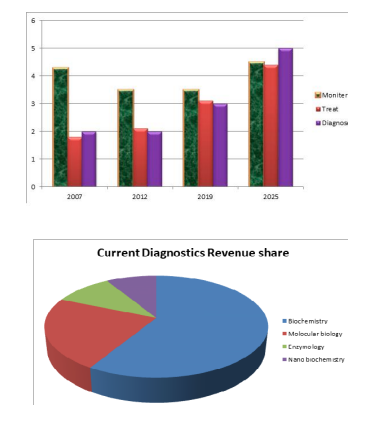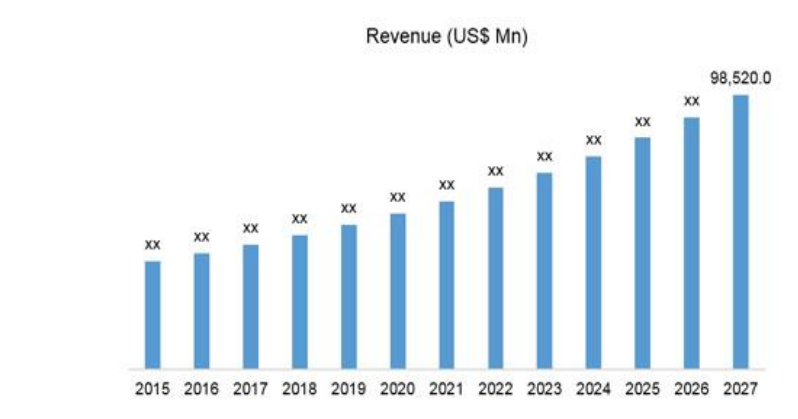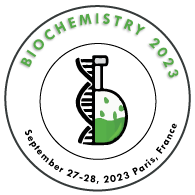Welcome Message
A "Congress on Biochemistry and Molecular Biology" with keynote addresses, oral presentations, poster presentations, and exhibitions will be held in Paris, France on September 27-28, 2023. Euros icon welcomes speakers, members, students, agents, and exhibitors from all over the world to attend. The current conference's theme "Explore Biochemistry: Proved by Forensic through multidisciplinary approach" will focus on the examination of the atomic mechanisms by which hereditary information revealed by DNA might affect the processes of life.
The structure, capacity, and relationships among natural macromolecules are managed by biochemistry, which also acts as a tool to investigate and ponder atomic research. It includes all elements of contemporary sub-atomic and cell organic chemistry. Atomic physics is the study of the subatomic principles that underlie how cells replicate, interpret, and interpret. Despite being corrupted, the central idea of atomic science—that genetic material is translated into RNA and then converted into protein—still provides a good starting point for comprehension of the subject.
This Biochemistry conference would create a platform for all academicians, scientists, young researchers, and industrial members to collaborate and mean their advanced logical investigations with renowned researchers from around the world, accelerating progress in this field.
About Conference:
Leading academic scientists, researchers, and research scholars will be gathered at the International Conference on Biochemistry and Molecular Biology to discuss and exchange experiences and findings related to all areas of biochemistry and molecular biology. It also gives researchers, practitioners, and educators a world-class interdisciplinary forum to present and discuss the most recent advancements, concerns, and trends as well as real-world difficulties faced and solutions chosen in the areas of biochemistry and molecular biology.
Conference Name: 7th International Conference on Biochemistry and Molecular Biology
Short Name: Biochemistry 2023
Date: September 27-28, 2023
Venue: Paris, France
What’s New?
The Biochemistry and Molecular Biology research has also set itself the goal of attempting to set up exercises aimed at improving coordinated efforts amongst experts in fundamental and clinical research as well as to energise interdisciplinary research projects at various levels.
Researchers have been able to study how the human brain affects a metabolic process that is essential for the survival of every single living thing thanks to neuron-like cells produced from a readily available cell line. Researchers have identified new drug targets and defence mechanisms in 262 parasite cell lines of Plasmodium falciparum, the protozoan pathogen that causes jungle fever and is resistant to 37 different antimalarial combinations, using whole genome analyses and chemo genomics. According to recent research that examined the harm caused to individual cells by contamination and the outcome of antiviral intervention, an antiviral solution that restricts a contamination's replication apparatus notably focuses on the most severe diseases.
Why to Attend?
Colleges, foundations, research centres, actual social orders, and companies that control a significant market in research facility developments are the main targets of Biochemistry 2023.
We appreciate each person that joins us for our biochemistry and molecular biology meeting.
Our conference will provide the perfect platform to illuminate learning by:
Innovative Methods for Your Research
Sterling workshop and sessions
Presentations by experts from the global academic community on innovative topics
Noteworthy Awards and Global Recognition to Commendable Research's Global Business and Networking Opportunities
Fantastic platform for showcasing your goods and global sponsorship
Target Audience
Researcher Scientists | Faculty | Dean | Directors | CEO's of the companies | Young Research people | Business Entrepreneurs | Training Institutes | Industry Professionals | Health Promoters | Professors and Students from Academia | Biotechnologist | Clinical Scientist | Research Associates | Chemist Microbiologist | Biomedical Scientist | Pharmacologist | Laboratory Technician | Lecturer in an Educational institution | Medical Institutes | Hospitals | Research Institutes
Sessions and Tracks:
Track 1. Biochemistry for Material Science:
Complexes, proteins, and catalysis through a series of case studies, reveals recent advancements in the discipline of biochemistry, allowing materials scientists to take use of these breakthroughs for innovation in their own field, from the design of bio-inspired materials to the use of cutting-edge catalyst classes. A look at various biochemical materials, a discussion of the fundamental concepts and methods of biochemistry, an investigation into the fields of bioscience, chemistry, and inorganic-related materials, and an introduction to seven recent discoveries are all included in the course Biochemistry for Material Science. Cosmo chemistry is discussed in the book's epilogue.
Track 2. Cardiovascular Biochemistry:
Cardiac biochemistry refers to the biochemical processes and characteristics that underlie both healthy circulatory performance and conditions like coronary failure. The use of the circulatory system and, thus, the biochemistry of grafts.
Track 3. Chemical Biology and Computational Chemistry:
A subfield of chemistry called computational chemistry may make use of simulation to help with chemical problem-solving. The study of the chemistry in biology is known as biochemistry. Understanding how proteins are translated, peptide bonds are created, macromolecular interactions take place, the cell produces metabolites, and other such concepts are covered.
Track 4. Clinical Pathology:
In terms of technology, clinical pathology has also advanced. Recently, picture digitising technology has been developed, making it simpler for lab technicians and viewers of the results.
Track 5. COVID 19 and Biochemistry:
Research on COVID 19 is being conducted in a number of biochemistry laboratories for a variety of reasons, including studying how the virus interacts chemically with different substances in the body and for medicinal purposes. Numerous studies produced promising findings that aided in the development of vaccines.
Track 6. Enzymology and Biochemistry:
Biochemistry, often known as biological chemistry, is the study of chemical reactions that take place inside and around living things. Biochemical processes contribute to the complexity of life by regulating the flow of information through biochemical signalling and, consequently, the flow of energy through metabolism. Biochemical research is presently being conducted in the majority of the life sciences, including botany, medicine, and genetics. Over the last decades of the 20th century, biochemistry has grown so successful at understanding biological processes.
Track 7. Enzymology in Molecular Biology:
Based on cutting-edge therapeutic targets, molecular enzymology is used to develop and synthesise enzymes to address significant unmet medical needs. Innovative therapeutic targets are backed by the work of engineering and synthesising enzymes and high unmet medical demand. The field of molecular enzymology is interested in all aspects of enzymes, including their discovery, structure, mechanisms, cellular and metabolic functions, use in biotechnological and pharmaceutical applications, drug discovery, biochemical aspects of enzymes, bioinformatics, computational analysis, molecular modelling studies, new techniques for enzyme expression and purification, bio catalysis, and bio molecular engineering.
Track 8. Lipids and Metabolism:
Lipid metabolism is the process of breaking down or storing lipids for energy; these fats can be ingested and absorbed from food or they can be produced by an animal's liver.
Track 9. Medical Genetics:
The field of medical biology is concerned with the physical and chemical properties of genes and how they are expressed, which affects how an organism develops and is maintained. The field of medical genetics is very new, and at this point, it is used to explain the causes of many inherited disorders. Health conditions like mannosidosis and galactosemia occur because of the lack of a specific protein or enzyme that prevents the metabolism of carbohydrates, proteins, and fats and, as a result, manifests clinical symptoms. These conditions are similar to haemophilia, which results in the generation of unreliable proteins. Approximately 200 "inborn errors" of metabolism in animals have been identified.
Track 10. Molecular and Cellular Biology:
Since cell and biology aims to understand life and cellular activities at the molecular level, it is an interdisciplinary discipline of study that also works with the domains of chemistry, structure, and biology.
Track 11. Molecular and Structural Biochemistry:
A branch of biochemistry known as structural biochemistry is primarily concerned with the structural properties of molecules found inside of cells and in other living things. The primary focus is on the structural underpinnings of basic biological activities. It entails researching the composition of large molecules. Both big data sets of structural information and methods for determining structure are included. A few tools will be used to research certain classes of structures, such as membranes, regulatory proteins, and structural proteins. These structural macromolecules will serve as the basis for discussions on domains, motifs, structural homology, and other topics, as well as how particular biological issues are frequently resolved at the atomic level.
Track 12. Molecular Biology and Material Science:
The mitochondrion, the chloroplast, the ribosome, and the replication and transcription complexes are all made up of nanostructures, which are the basic machines that power the cell's histones and proteasomes. Nanostructures are the pores and templates of zeolites and other crucially important structures in catalysis. The highest length scale over which a crystal may frequently be rendered virtually flawless is the nanometre. A completely new generation of sophisticated composites is possible if it is possible to perfectly control how impurities and imperfections interact with one another and therefore merge flawless inorganic and organic nanostructures.
Track 13. Molecular Virology:
The study of viruses at the molecular level is known as molecular virology. In host cells, viruses multiply as sub microscopic parasites. Viruses have more biological diversity than the rest of the bacterial, plant, and animal kingdoms put together because they can successfully infect and parasitize a wide range of life forms, including microbes, plants, and animals. The key to a greater understanding of how viruses interact with their hosts, multiply inside of them, and cause diseases is studying this diversity.
Track 14. Nano Biochemistry:
The study of Nano scale structures also involves the use of components or systems that are 109 times smaller than conventional components. Nano biochemistry was launched as a result of the consolidation of these two technologies. This biology and applied science knowledge base will result in a variety of creative tools. Engineering has been used in biological sciences to create materials and equipment that work very specifically at specific locations within the body. This is probably common practise for target cellular and tissue-specific clinical applications that aim for the best possible therapeutic results without any side effects.
Track 15. Nutritional and Clinical Biology:
The perception of the method by which eating affects human health & illness condition is maintained by nutritional biochemistry. The qualities of nutrients, various dietary substitutes, and the investigation of their physiological, metabolic, biochemical, and genetic roles are its main contributions. With its main applications in clinical chemistry, biology, toxicology, laboratory immunology, and medicine, clinical biochemistry uses a fair variety of analytical techniques for disease diagnosis, prognosis, treatment, and cure.
Track 16. Pharmaceutical and Medicine Biochemistry:
The area of medicine known as medicinal biochemistry deals with the metabolism and biochemistry of human health and disease. Medical chemists are trained in the management and operation of clinical biochemistry laboratories, and they serve as experts in every facet of their utilisation. The science of pharmaceuticals, their clinical applications, and the investigation of their negative effects on living things are the main topics. It offers a comprehensive understanding of all molecular chemical reactions taking place in live cells and connected to drug activity. Obtaining information about the side effects, molecular targets, and characteristics of a drug or other chemical agent in living cells and organisms is also helpful.
Track 17. Pharmacology and Toxicology:
A branch of science known as pharmacology deals with the development, chemistry, composition, identification, biological and physical effects, applications, and manufacture of pharmaceuticals. Pharmacology is frequently confused with pharmacy, a field that may involve the manufacturing and distribution of medications. Toxicology is a field of biology, chemistry, and medicine that focuses on understanding how chemicals affect living things negatively. Additionally, it investigates the damaging results of chemical, biological, and physical agents in biological systems that determine the severity of harm to living things.
Track 18. Plant Animal Biochemistry:
Animal biochemistry is the study of the different chemical processes that are constantly taking place within an animal's body. In addition to being an important area of basic science that explains the molecular function of plants, plant biochemistry is also a branch of engineering that has the potential to help solve issues in agriculture and pharmaceuticals. It is anticipated that in the future, gene technology will lead to a significant increase in the utilisation of plants as a source of sustainable staple for industrial uses. As a result, this volume describes the methods and applications of gene splicing for improving crop plants and supplying sustainable raw materials for the chemical and pharmaceutical sectors. Included are the most recent research findings and topics for additional study is noted.
Track 19. Protein and Analytical Biochemistry:
The majority of a cell's molecular machinery is provided by proteins. There are numerous enzymes or enzyme components. Alternative proteins form the struts and joints of the structure, among other structural or mechanical functions. Every macromolecule is made up of linear amino acid polymers. A study of the biochemical elements present in a cell or other biological sample can be referred to as analytical biochemistry. For the separation, identification, quantification, and practical characterisation of biological molecules such nucleic acids, enzymes, proteins, pigments, carbohydrates, and others, this field employs a wide range of techniques.
Track 20. Structural Biochemistry:
A subfield of biology, biochemistry, and biophysics is structural biochemistry. The study of the three-dimensional structures of physiologically significant molecules and macromolecules, such as proteins, nucleic acids, and carbohydrates, is known as structural biology. These molecules' 3D structures in general define their functions. Even with the most sophisticated light microscopes, biomolecules are too tiny to be observed closely.
Track 21. Structural Molecular Biochemistry and Structural Bioinformatics:
Structural biology, working from both experimentally solved structures and computer models, with generalisations about macromolecular 3D structure, such as comparisons of overall folds and native motifs, rules of molecular folding, evolution, and binding interactions, and structure/function relationships Structural biology is a field of biology, biochemistry, and biophysics that studies how biological macromolecules, particularly amino and nucleic acids, acquire their structures and how changes to those structures affect how those molecules operate.
Track 22. Study of a set of proteins in Biochemistry and Molecular Biology:
The field of molecular enzymology is interested in all aspects of enzymes, including their discovery, structure, mechanisms, cellular and metabolic functions, use in biotechnological and pharmaceutical applications, drug discovery, biochemical aspects of enzymes, bioinformatics, computational analysis, molecular modelling studies, new techniques for enzyme expression and purification, bio catalysis, and bio molecular engineering.
Market Analysis:
According to this estimate, the market for global biochemistry analyzers will expand at a CAGR of 4.50 percent from 2016-2020. The market for biochemistry analyzers is concentrated in North America, Europe, and Asia, and the top countries include China, Germany, Japan, and the United States. The European market is the second-largest market for biochemical analyzers, with North America ranking first in this category. The Asia Pacific region's enormous population base and on going developments in the healthcare sector are anticipated to fuel the market for Asia Pacific biochemical analyzers. The market for biochemistry analyzers contributes positively to the in-vitro diagnostic market and is predicted to expand in the years to come. In 2014, there was $57.3 billion worth of in vitro diagnostics (IVD) items sold worldwide. The market is anticipated to increase at a compound annual growth rate (CAGR) of 6.1% from $60.3 billion in 2015 to $81.1 billion by 2020. The IVD product industry has been dominated by North America from its inception, with a value of $24.6 billion in 2014. The market is anticipated to grow at a CAGR of 3.1% from $25.3 billion in 2015 to $29.4 billion in 2020. With a CAGR of 12.9% from 2015 to 2020, Asia is the region of the global IVD market that is expanding the quickest. In 2015, the market was valued $15.3 billion, and by 2020, it is anticipated to be worth $28.2 billion.
The market for biochemistry and molecular biology analyzers is mostly concentrated in North America, Europe, and Asia, with the United States, Germany, Japan, and China serving as the major nations. The European market is the second-largest market for biochemical analyzers, with North America ranking first in this category. The Asia Pacific Biochemical Analyzers market is anticipated to grow in importance due to the region's enormous population and ongoing developments in the healthcare sector.
The market for biochemistry analyzers contributes positively to the in-vitro diagnostic market and is predicted to expand in the years to come. With a cumulative annual growth rate (CAGR) of 6.1%, the market for in vitro diagnostics (IVD) products is projected to increase from $60.3 billion in 2015 to $81.1 billion by 2020.
The IVD product industry has been dominated by North America from its inception, with a value of $24.6 billion in 2014. The market is anticipated to grow at a CAGR of 3.1% from $25.3 billion in 2015 to $29.4 billion in 2020. With a CAGR of 12.9% from 2015 to 2020, Asia is the region of the global IVD market that is expanding the quickest. In 2015, the market was valued $15.3 billion, and by 2020, it is anticipated to be worth $28.2 billion.
The main countries in the region where the Biochemistry Analyser market is concentrated are the United States, Germany, Japan, and China, among others. The European market is the second-largest market for biochemical analyzers, with North America ranking first in this category. The Asia Pacific Biochemical Analyzers market is anticipated to grow in importance due to the region's enormous population and on going developments in the healthcare sector.
The market for biochemistry analyzers provides a healthy contribution to the market for in vitro diagnostics and is anticipated to increase in the following years. the world. The in vitro diagnostics (IVD) market was worth $57.3. per year in 2014. The industry is anticipated to expand from at a rate of $81.1 billion by 2020 from $60.3 billion in 2015. 6.1% CAGR or compound annual growth rate.
The IVD product industry has been dominated by North America from its inception, with a value of $24.6 billion in 2014. The market is anticipated to grow at a CAGR of 3.1% from $25.3 billion in 2015 to $29.4 billion in 2020. With a CAGR of 12.9% from 2015 to 2020, Asia is the region of the global IVD market that is expanding the quickest. In 2015, the market was valued $15.3 billion, and by 2020, it is anticipated to be worth $28.2 billion.
The graph below displays the predicted changes in expenditure ratios in the market for biochemistry and molecular biology:

The Biochemistry Market research provides a comprehensive overview of the industry, accurate market indicators, and estimates broken down by product, application, innovation, region, and end-use. with development slants, different partners such as financial experts, CEOs, merchants, suppliers, research and media, universal Manager, Director, President, SWOT analysis for things like Quality, Weakness, Opportunities, and Threat to the Association, among others. The volume and incentives of the Professional Global Biochemistry Analyzer Market 2019–2024 at the global, territorial, and interpersonal levels are the main subjects of this report. The Global Enzymes Showcase was estimated to be worth $10.48 billion in 2018 and is expected to grow at an 8.9% CAGR from 2019 to 2025. In natural processes, catalysts are biocatalysts that animate the process and deliver the desired outcomes.
Another GIR (Global) report estimates that the global market for biochemistry analysers will grow at a CAGR of roughly xx% over the next five years, from xx million US$ in 2017 to xx million US$ in 2023. Its goal is to have 10% of all vehicles energises from sustainable sources, such biofuel, in its component nations by the year 2020. A few governments (including those of Germany, Sweden, France, and Austria) are developing strategies for organising the production of biodiesel. I'll be able to observe a change in the chemical market in Europe in the future.
The market for enzymes was estimated to be worth $10.48 billion in 2018 and is expected to grow at a CAGR of 8.9% from 2019 to 2025. In natural processes, catalysts are biocatalysts that animate the process and deliver the desired outcomes. Expanding interest in the renown compounds in applications like biotechnology, pharmaceuticals, and pharmaceutical research. It is expected to be the primary force guiding the development. Japan, behind the US, is the world's second-largest showcase for the biological sciences. Europe was one of the major chemical markets in 2017 as a result of several EU programmes aimed at advancing condition prosperity. By using biofuels like biodiesel and bioethanol instead of non-renewable energy sources, it aims to reduce nursery emissions.
This study focuses on the global market for biochemistry analyzers, primarily in North America, Europe, and Asia-Pacific, as well as in South America, the Middle East, and Africa. The market that is influenced by producers, districts, kind, and application is defined in this study. The market for biochemistry analyzers is being driven by a number of factors, including the growing geriatric population, the expansion of R&D activities, and the growing urbanisation and population. One of the key driving forces behind the development of this market is the expansion of computerization in research facilities.

Mechanization of research centres increases profitability more noticeably by fostering safer working conditions, reducing operational costs, and reducing the need for labour. Additionally, automation enhances the viability in the differentiation of test proof, easy information storage, lower segment and test volume, decrease, less spent research facility area, and faster turnaround. Because of its growing population and high prevalence of persistent and unavoidable ailments, the Americas are regarded as the major market income supporter. According to a different GIR (Global) study, the global market for biochemistry analyzers will grow at a CAGR of roughly xx% over the next five years, reaching xx million US dollars in 2023 from xx million US dollars in 2017. Its goal is to have 10% of all vehicles energises come from sustainable sources like biofuel in its component nations by the year 2020. A few governments (including those of Germany, Sweden, France, and Austria) are developing strategies for organising the production of biodiesel. I'll observe a change in the chemical market in Europe in the future.
The adoption of structural biology and molecular modelling techniques in the drug discovery and development process is anticipated to increase as a result of the growth of biochemistry research due to the numerous new methodologies that are introduced into the process of increasing drug resistance coupled with the high impact rate of drug exchange. This is anticipated to be a successful strategy for accelerating the creation of highly potent medications. Companies involved in the marketing and advancement of biochemistry research have turned to China and India as new markets. Clinical and nutritional biochemistry, medicinal and pharmaceutical biochemistry, structural and molecular biochemistry, protein and analytical biochemistry are the prominent subfields of biochemistry. An examination of biological elements found inside the body is the focus of the field of clinical natural chemistry. With its main applications in clinical science, science, remedial medication recognition, toxicology, research centre immunology, and prescription used for diagnosing, anticipation, medicinal guidance, and the executives of illness, clinical natural chemistry employs an honest change of diagnostic systems.
The Global Biochemistry Analyzers Market Report was created with input from industry professionals and extensive market research. The Americas are covered in the paper, which also includes the EMEA and APAC areas. Additionally, it discusses the structure of the global biochemistry analyzers market and its future growth prospects. A discussion of the major supplier’s active in this industry is also covered in the report. The analysis was conducted utilising an objective mixture of primary and secondary information, as well as contributions from significant industry players. From $25.3 billion in 2015 to $29.4 billion in 2020, the market is expected to grow at a CAGR of three.1%. With a CAGR of 12.9%, Asia is the area of the global IVD market that is expanding the fastest from 2015 to 2020. The market is worth $15.3 billion in 2015 and is predicted to succeed in $28.2 billion by 2020.
Top Societies & Associations Associated with Biochemistry Research:
In Asia:
World Association for Chinese Biomedical Engineers
Chinese-American Chemical Society
The Hong Kong Medical Association
The Chinese Society of Biochemistry & Molecular Biology
Chinese Chemical Society
Chinese Society for Cell Biology
Genetics Society of China
Biochemical Society
Across the world:
The American Society for Biochemistry and Molecular Biology
European Federation for Clinical Chemistry and Laboratory Medicine
Japan Society of Clinical Chemistry (JSCC)
Australian Society Biochemistry and Molecular Biology
Asia-Pacific Federation for Clinical Biochemistry and Laboratory Medicine (APFCB)
Belgian Society of Biochemistry and Molecular Biology
International Federation of Clinical Chemistry and Laboratory Medicine
Societies Related to Biochemistry and Molecular Biology
Australasian Association of Clinical Biochemists (AACB)
Australian Society of Biochemistry and Molecular Biology
Belgian Society of Biochemistry and Molecular Biology
Biochemistry and Biomedical Sciences Society (BBSS)
Egyptian society of Biochemistry and Molecular Biology
Federation of European Biochemical Societies
Hong Kong Society of Biochemistry and Molecular Biology
International Society of Nucleosides, Nucleotides, & Nucleic Acids
International Union of Biochemistry and Molecular Biology
The Israel Society for Biochemistry and Molecular Biology
The Italian Society of Clinical Biochemistry and Clinical Molecular Biology
The Nigerian Society of Biochemistry and Molecular Biology
The Slovak Society for Biochemistry and Molecular Biology
Major Companies Related to Biochemistry and Molecular Biology
Thermo Fisher Scientific Inc. (USA)
Pfizer (USA)
Merck (USA)
Novo Nordisk (Denmark)
GlaxoSmithKline (UK)
Bristol-Myers Squibb (USA)
Biocrates (Austria)
Gilead Sciences (USA)
Biogen Idec, (USA)
Celgene, USA
Shire Pharmaceuticals (Ireland)
Past conference
Biochemistry 2022 Report
Conference Series hosted the event “6th International Conference on Biochemistry & Molecular Biology” at Sydney, Austria during August 22-23, 2022. The conferences were organized with a focus on the themes “Understanding Biochemistry through Multidisciplinary Approach” was a great success where eminent keynote speakers from various reputed companies and Universities made their resplendent presence and addressed the gathering.
The event proceedings were carried out through several Scientific-sessions and plenary lectures, Conference Series would like to express a sincere thankfulness to all the Honourable guests and Keynote Speakers of 6th International Conference on Biochemistry & Molecular Biology. We would like to convey a warm gratitude to all the Honourable guests and Keynote Speakers of Biochemistry 2022.
Biochemistry 2022 committee would like to convey a warm gratitude to all the Honourable guests and Keynote Speakers, Randy W. Schekman from University of California, USA; Dr. Alexandre M.J.J. Bonvin from Biomet Centre for Bimolecular Research. USA; Dr. Pawel Suwinski from Bioinformatician at Swansea University. , Malaysia; Alfred L. Goldberg from Harvard Medical School, Boston, MA, USA; John D. Scott from Professor of Cell Signalling and Cancer Biology. USA; Lan Guan, M.D., Ph.D. from Department of Cell Physiology and Molecular Biophysics have given a wonderful talk which makes allows the delegates and other attendees to gain the knowledge about main course of the event.
Biochemistry 2022 Organizing Committee would like to thank the Moderator of the conference, Zoltan Tokes from USC University of Southern California USA, who contributed a lot for the smooth functioning of this event and for taking up the responsibility to coordinate during the sessions for smooth functioning of this event. We are indebted to your support.
Conference Series conferences also took the privilege of felicitating Biochemistry 2022 Organizing Committee, Keynote Speakers, Plenary Speakers, Chairs and Co-Chairs, Young Researchers and other attendees whose support made the conference a great success.
We also would like to thank all our Speakers, Poster Presenters and Delegates for taking out your time and sharing their research work with our peer network. We are very glad to have shared a great relationship with all these Attendees, associations and we hope to see even greater support in our upcoming events. We would also like to thank Chairs and Co-chairs of the conference, Louis Herlands Sidra Medical and Research Center USA; Ramaz Katsarava from Agricultural University of Georgia, Georgia; Louis Herlands from Sidra Medical and Research Center USA for a being a great support for our event to be a grand success.
A series of lectures by distinguished professionals discussed the recent trends and issues in inter-disciplinary Biochemistry and its technical advancements.
Save your dates for the most awaited event of 2023
With a great response and feedback which we received from participants and supporters from Biochemistry 2022, we are proud to announce our upcoming conferences in the Series 7th International Conference on Biochemistry & Molecular Biology on September 27-28, 2023 in Paris, France with the theme of Understanding Biochemistry through Multidisciplinary Approach
Some of our conference images are as follows:
The main aim of this conference is to solicit the gracious presence of our honourable, to the upcoming conference “7th International Conference on Biochemistry & Molecular Biology” that is going to be held during September 27-28, 2023 in Paris, France, to share and exchange their knowledge.
It is an International platform for business delegates, B2B meetings, poster presentations, workshops, symposia, networking and more. It will offer a platform wherein you can ensure enormous exposure and networking by exhibiting products and services. Grab the opportunities, and share your innovative ideas, new technologies and recent researches.
Biochemistry 2023 witnesses an amalgamation of peerless speakers who enlightened the gathering with their contribution towards the prevention of Biochemistry related difficulties, its effects and treatment on Biochemistry.
For being a Experts in Biochemistry and Molecular Biology, we hope that this platform gives knowledge and new updates by undergoing with the several interactive sessions to encourage the exchange of innovative ideas in the field of Biochemistry and its advancements, in that all the session talks are consider to be a great talks which makes the delegates, exhibitor, collaborators and other speakers feels so much interesting.
Being a significant expert in this area we would like to Invite you as an International Organizing Committee Members, Speakers, Keynote speakers, Young Research forum, Sponsors and Exhibitor, etc. for Biochemistry 2023 Our goal is to deliver an outstanding program which covers the entire spectrum of research & innovations in Biochemistry, Molecular Biology and share the cross-cultural experiences of various principles and practices.
The centre of the activity of Biochemistry 2023 is to produce the clear visual definition by undergoing with Oral Presentation, Poster presentation, Workshop, Exhibition, networking and interacting session
With the feedback from your renowned Speakers, we have added some of the new Session tracks that needs to be focused such as such as Nutritional and Clinical Biology, Pharmaceutical and Medicine Biochemistry, Molecular and Structural Biochemistry, Protein and Analytical Biochemistry, Molecular and Cellular Biology, Enzymology and Biochemistry, Enzymology in Molecular Biology, Nano Biochemistry, Cardiovascular Biochemistry, Pharmacology and Toxicology, Medical Genetics, Clinical Pathology.
With the great support we have successfully completed Biochemistry 2022 and we are expecting huge response and support from the Biochemistry Doctors, Biochemistry and Molecular Biology Professionals, Young researchers, Students, Delegates, Directors and other Biochemistry and Molecular Biology related companies to have your gracious presence at Biochemistry 2023 on September 27-28, 2023 in Paris, France to make this congress a great successful event of the year 2023
Join our team Biochemistry 2023 at this beautiful city of France and let’s make this professional gathering a Great success
Contact us:
Freya Adam
Program Manager
Biochemistry 2023
Email:









